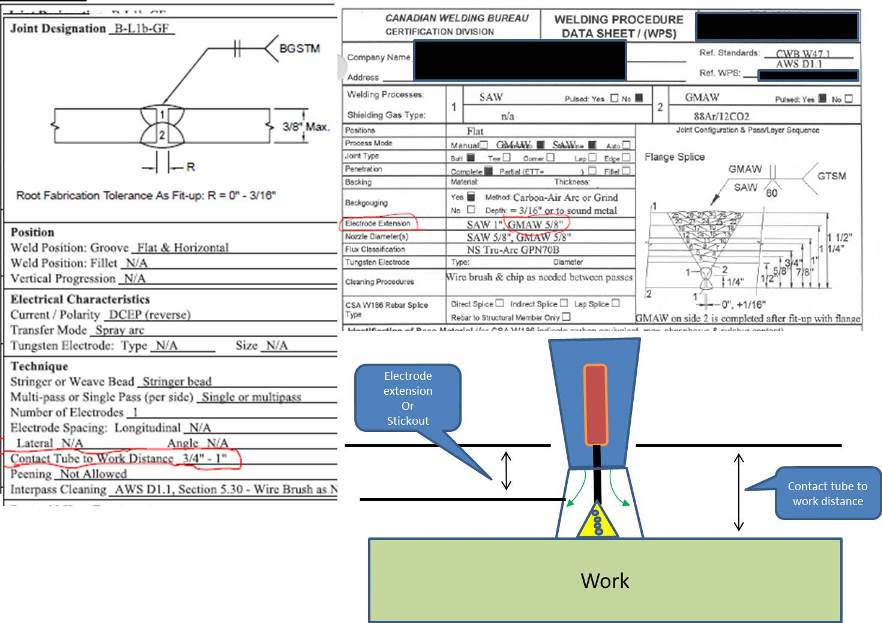When dealing with codes and standards I would agree that AWS A3.0 is the document to be used, at least in the U.S. - ASME IX (QW-490) and API 1104 (section 2 and 3.1) both identify AWS A3.0 with regards to terms and definitions, not to mention the AWS D's.
Good day Glyn,
A major consideration with terminology is how easy it is to confuse issues when using totally differing definitions and/or terms to describe something.
This does take on a strange twist when you have API calling out a discontinuity with one term and AWS using another term and yet API claims to incorporate AWS A3.0 Standard Welding Terms and Definitions into their specification 1104.
And while most of us here do gratefully acknowledge the presence and participation of our forum members who are part of the brotherhood of welding but have been trained and currently practice the trade in a good many locations around the globe thus broadening all of our horizons it is still incumbent upon us to try to utilize terminology that will help all of us understand the question and answer/counsel given. So, while not trying to put down any institution in other countries it is also acknowledged that this is The American Welding Society based in the United States of America and that said organization is ONE of the foremost organizations for compiling and distributing information enhancing the science and technology of welding around the world and that it has been yielded to by many as the ground level foundational basis for connecting the dots for all other institutions. It is also incumbent upon us to realize that the majority of participants to this forum are from the US and seeking assistance from a common knowledge base that can be understood without compromise.
Again, this is no slam on anyone else, in fact I weighed it very carefully as I do not want to offend anyone and discourage them from participating. I think I have made that clear in previous posts in trying to encourage electrode, Joey, Shane, you/Glyn, nanjing (I do know the current status here but included it anyway), and others in their participation in this forum. Your input of knowledge and experience has been very respected and appreciated here.
Noting next the efforts being made in all the various AWS committees to also bring all technical, specification, standards, and codes into a uniform and complete conformance with A3.0 to eliminate confusion in the very organization establishing a common base it is important for us to do the same. This is likened unto calling the work lead the ground. Calling GTAW Heli-Arc (especially when not using anything close to the original Heli-Arc process). And so many other examples.
I agree, AWS is not the all inclusive or exclusive final authority in ALL things welding. We also have BSMC, PMA, SME, IIW, and others. Most of whom are working with AWS to standardize many items and especially terminology.
We all understand the confusion that takes place when a firm in one country is reviewing plans from another country with differing codes as to the applicable weld/welding symbols.
I would have to side with Al that there needs to be a common basis and the consistent use of proper terminology to keep communications decent and in order. And, in this particular case, it needs to be AWS A3.0.
Having said that, there are a good many items that need inclusion and/or revisiting in A3.0. The technical inquiry process yields to that better in 3.0 than it does in D1.1 I am glad to say. On this forum we often come across items that could use some clarification. It would appear to be an item that as we come across one, one of the participants should offer to do so. It is not a difficult process but should not be assigned to just one person. Share the load. If it is your issue, take care of it.
I don't believe Al's overall intent was to limit all people to nothing but A3.0 regardless of all other circumstances. But, just as the contract documents include a listing of applicable standards and codes for a building contractor to adhere to, I believe we need a standard here and as most of the content revolves around the US and AWS standards and especially the D1 codes then it makes sense that the terminology standard be A3.0.
That makes even more sense when say Joey may come and ask a question about an item of interest in D1.1. We need to use A3.0 to describe what is being explained in D1.1 so that we are all on common ground. Now, if you asked us about some EN code, then we need to set A3.0 aside and go to the responsible party's terminology to make sure we are all discussing the same thing. For us to use our terms and defs to describe an EN code situation would be silly. BUT, it would behoove the two organizations to have as much in common as possible so that engineers, designers, fabricators, welders from around the world don't get confused on projects in various locations. Doesn't matter whose, just pick one and get it taken care of.
He Is In Control, Have a Great Day, Brent











